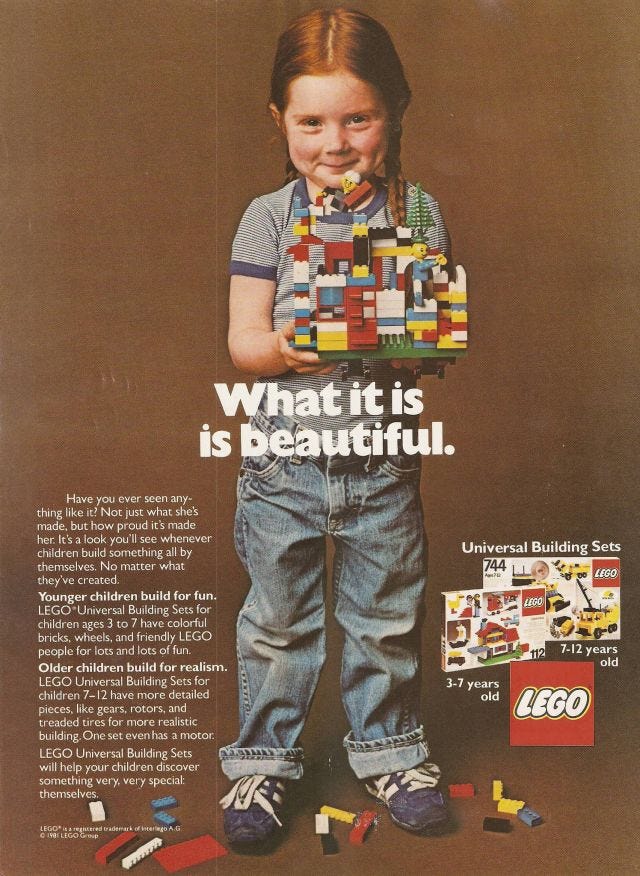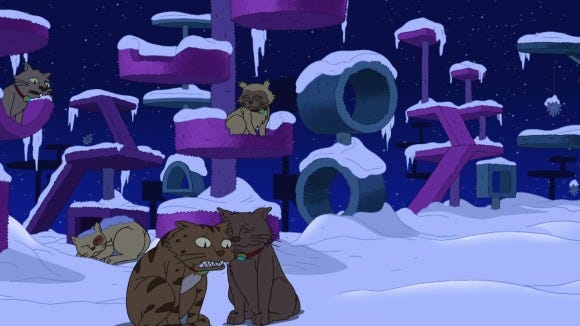So What, Who Cares (vol 2, issue 97) How gender contamination could be costing you

Welcome to the last week of July! I was going to make a joke about there being only five weeks left until the return of Pumpkin Spice Latte season, but in trawling the Web for verification of this, I actually found a website devoted to counting down the days until Starbucks rolls out its winter holiday drinks, so now anything I might say about spicy seasonal creep is rendered meaningless.
Let's focus on a more relevant question: What's your beverage of choice for summer? It can alcoholic or non, you can share your winners across multiple categories ("Best beverage on roadtrip" or "Best beverage when it's too hot to move") -- just share your favorite for the summertime: Twitter or email.
*
"Gender contamination" sounds like a dystopian sci-fi phrase, something Sherri S. Tepper would incorporate into one of her novels. Yet it's a marketing term that articulates a simple conceit: If a product is perceived as something one gender uses, the other won't buy it. Jill Avery, of the Simmons School of Management in Boston, studies gender-targeted marketing. In 2012, she concluded that the 2010s-era rise in gender contamination as a marketing angle is a result of shifting gender roles and definition in U.S. society: "As gender lines are blurring, we need our things to send clearer signals."

Gender contamination starts young, and it has its seeds in the Reagan years: Back in the 1980s, the FCC deregulated television, which removed limits on children's advertising while also creating a TV market for new, gender-targeted shows that supported products (He-Man, Jem and the Holograms). And then, as the Boston Globe reports: "Marketers suddenly viewed children as a segmentable, highly lucrative demographic after largely ignoring them for 50 years." In 1975, fewer than 2% of toys in the Sears catalog were labeled by gender, and child models were shown breaking out of stereotypes: little boys cuddled toys and little girls played with construction toys. In 2014, an analysis of speech patterns and an analysis of toy marketing catalogs and websites found an unprecedented percentage of toys segregated by gender.
Paradoxically, some marketers are going in exactly the opposite direction. Deedee Gordon of Sterling Brands argues that gender fluidity is a much more lucrative angle for brands to take: In this day and age, where transgendered citizens are part of mainstream cultural conversation and "institutional America" (universities, corporations, civic offices) have gender-neutral bathrooms and housing, staking your product on one gender or another is a recipe in losing money: "Products marketed explicitly by gender can put up to half of potential sales at risk." Just ask Calvin Klein: back in the 1990s, they marketed the scent CK One as unisex and made $90 million a year in sales.
So what? Gender contamination has both social and financial repercussions. According to educational consultant Lori Day, the toys' gender contamination infects interpersonal play:
“Boys and girls stop playing together at a much younger age than was developmentally typical until this recent gender segmentation,” she says. “The resulting rigidly stereotyped gender roles are unhealthy for both males and females, who are actually more alike than different.”

And Racked writer Beejoli Shah spent a week using products that were marketed to men -- everything from Spanx to anti-aging cream and found that the products performed just as well as the woman-targeted products, yet cost a fraction of the price.
A LearnVest report found that the so-called "female tax" affects everything from women's apparel -- imported women's shoes have a tariff of 10% compared to the 8.5% tariff on men's shoes -- to basic grooming, with the state of California finding that gendered women's products and services cost female consumers $1351 more annually than their male counterparts.
Who cares? Economy-minded people. Why should you pay more for face cream just 'cause you're a chick?
So what this means is that marketers are going to have to care too: They either have to persuade women that the female premium is worth the extra cash for the same product -- an interesting challenge given that women typically earn 16-19% less than to their male counterparts -- or they're going to have to persuade men to pay more.
The idea of positioning the product as for all genders? Today's marketers say they prefer to focus on very specific customer segments because the narrow targeting increases the chances for success. It will be interesting to see how marketers choose to appeal to gender-fluid consumers, and what new marketing approaches will surface in a culture where people are beginning to realize that biological sex and gender are not always one and the same.
*

Your pop-culture note of the day: During a period of particularly intense cabin fever, I staved off the urge to burn my house to the ground and start over under an assumed identity by compulsively reading fiction and nonfiction set north of the 49th parallel. (I may have tipped my hand viz multiple re-reads of Jon Krakauer's Into the Wild in vol 1, issue 65.)
So this roundup of "the best books about the northern wilderness and our place in it," which focuses on books about Alaska, hit a sweet spot.
My only suggestions to add to the list are actually in the mystery genre, because what are vacations for, if not sinking into a multi-book series you can devour over a few days?
And for that, I give you two authors. The first, Dana Stabenow, has written twenty books about her Aleut PI Kate Shugak, and the mysteries are fine, but what I really appreciate is Shugak's matter-of-fact rendering of the exigencies of Alaskan daily life. The second, Stan Jones, has published four mysteries centering around a protagonist who fits it almost nowhere:
Nathan Active is an Inupiat Eskimo and Alaska State Trooper who patrols the coldest beat in America: The tiny Inupiat village of Chukchi and the surrounding region, located on the windswept shores of the Chukchi Sea somewhere north of the Arctic Circle.
Nathan, though born in Chukchi, was adopted out as a baby and raised in Anchorage by two white schoolteachers. […] So, when the Troopers post him to Chukchi for his very first assignment after completing his training, it comes as a most unwelcome shock.
The Nathan Active stories describe not only his efforts to solve the peculiarly Arctic crimes that cross the blotter at the Troopers' Chukchi post, but also his struggle to come to terms with his complex identity as both an insider and an outsider in the village where he's called naluaqmiiyaaq -- the Inupiaq word meaning "almost white."

I like a good binge-read as much as the next person who's taking a weekend away from the computer, and it's a testament to both authors that my toes always feel frozen by the end of one of their books. Hit your library or stock your kindle before you take off for the beach.
For those of you who want your recreational reading to still feel marginally virtuous, then I'm going to suggest another one of my favorite freezing reads, the nonfiction exploration of life in frigid places Cold: Adentures in the World's Coldest Places by Bill Streever. Like all good science writers, he's got a robust sense of humor that buoys his narrative, and he gets points for resisting the urge to write "Many are cold, but few are frozen." Lord knows, I wouldn't have been able to resist.
*
Are there typos? Copyediting is the only editing class I did not earn an A in. And I can't change any typos in the archives. I know. It irritates me too.
Suggestions for links gratefully received -- hit me up via Twitter and email.
Feedback is welcome. Again --hit me up via Twitter and email.
Really like this newsletter? TELL A FRIEND TO SUBSCRIBE! Then the next time they go dropping some particularly interesting and insightful line into the conversation, you can smile to yourself because you'll know where they got it from. You're certainly not petty enough to silently mouth, "You're welcome" at them. You'll just stick to a knowing, sphinx-like smile.

